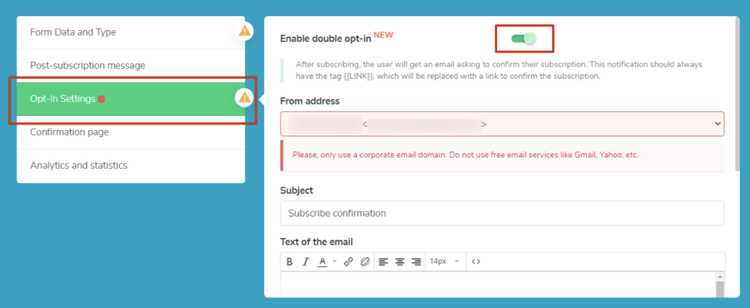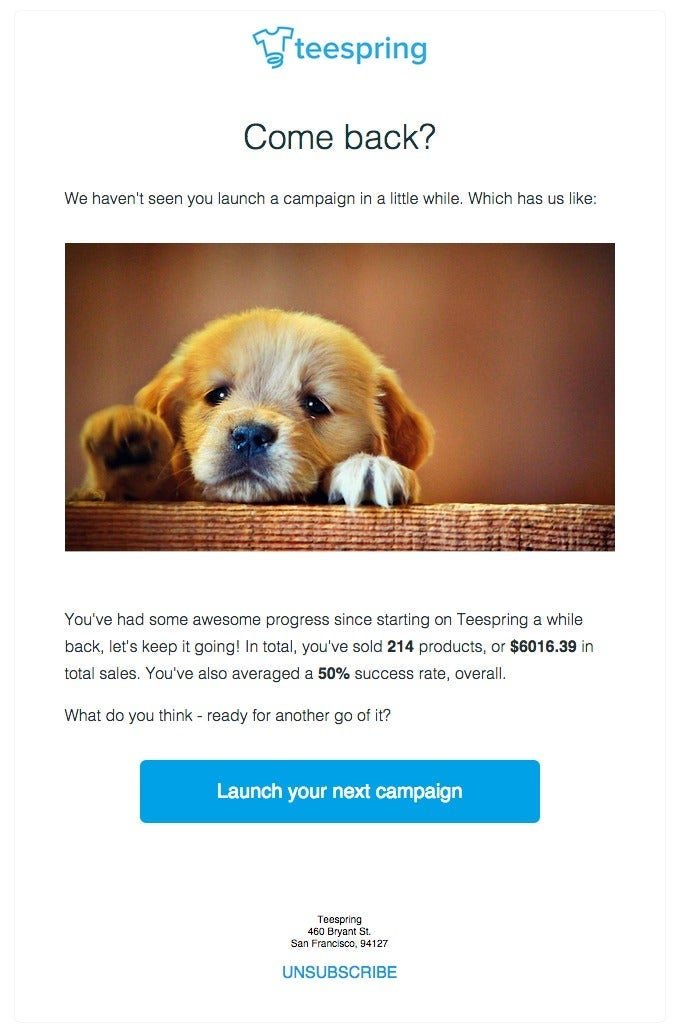Soft Bounce vs. Hard Bounce Email: What’s the Difference?
Email hard bounces are a threat to your email marketing campaigns. They hurt your email deliverability, wreck your sender reputation, cause you to be blacklisted -- and they keep you from reaching your customers.
It’s a plague you absolutely must avoid.
Industry standards dictate that a 2% hard email bounce rate is acceptable. I don’t know what your bounce rates are or if you’re even tracking them, but if you get anything over 2%, you need to look closely at your email campaigns and come up with a fix to decrease that number.
Overview: What is a hard bounce email?
There are two types of email bounces: hard bounces and soft bounces.
Hard bounces are emails that are returned or can’t be delivered to the recipient because of permanent errors. This happens when you send messages to invalid and nonexistent email addresses. Spam filters and email service providers could block you if you have too many hard bounce emails, impacting your email deliverability and sender reputation.
Soft bounce emails are messages that reach your recipients’ email server but bounce back as undelivered. A few issues that can cause email soft bounces are a full recipient inbox, an offline server, or your email file sizes are too large.
Knowing the difference between a hard bounce and a soft bounce is crucial to help you manage email bounce issues.
3 reasons emails hard bounce
We’ll go over three common reasons emails hard bounce, to help you prevent them. Examine your email marketing workflow to make sure you have systems in place that prevent your emails from bouncing.
1. Incorrect email address
Typos in your subscribers’ email addresses can cause hard bounces. If you have no way of checking or verifying the correct email addresses, you’re better off removing the contact to reduce your hard bounce rates.
2. Blocked email
Some domains, including some institutions and government agencies, have strict spam filter settings that can lead to your marketing emails getting blocked, causing hard bounces.
3. Invalid or fake email ads
Sending emails to contacts with invalid or fake email addresses can cause your messages to bounce back.
While you might not be able to fix all these issues, reviewing your email list and removing hard bounced email addresses will lower hard bounce rates and improve email deliverability.
What hard bounces mean for your email marketing campaigns
Spam filters and email servers flag high volume hard bounce rates as potential spamming. This leads to your messages getting blocked and your IP address added to a blacklist, harming your email deliverability.
Poor deliverability means your email marketing campaigns won’t reach your recipients’ inboxes, which can impact your sender reputation and prevent you from achieving your email campaign goals and ultimately, your sales and revenue goals.
Manage your email list by practicing good list hygiene. Remove inactive subscribers when necessary to help keep your list healthy and get more accurate email marketing metrics and data insights to refine your campaigns.
How to manage hard bounce emails in your email list
Consider these useful email marketing best practices to handle your hard bounce emails.
1. Use a double opt-in method
Set up a double opt-in sign-up process that requires your prospects to confirm their subscription twice. This prevents adding invalid or non-existent emails to your list since subscribers need to verify the subscription by clicking on a link within your confirmation email.
SendPulse, an email software program, lets you create a subscription form to enable the double opt-in option and edit the confirmation email text.

Enable double opt-in for your subscription forms on SendPulse for two-step email verification. Image source: Author
Turning on the double opt-in feature sends a confirmation email to your contacts automatically after they subscribe to your email list or newsletter. A double opt-in process can ensure your subscribers’ email addresses are active and valid, helping you avoid sending undeliverable emails.
2. Scrub your mailing list
Not every address in your email list will remain active or engaged forever. Your subscribers might change their email addresses or delete the email they used to receive your messages, among other reasons.
Clean your email list at least every six months to ensure you’re sending your emails to valid and active addresses, reducing potential hard bounces.
Scrub your mailing list to identify contacts who are no longer interested in receiving your messages. This lowers potential spam complaints because of messages you send to contacts who are not interested in engaging with your emails.
The fewer spam complaints and hard email bounces you have, the better your sender reputation will be.
Tips to remember before cleaning your email list:
- Determine why the email bounced. Know what caused your emails to bounce and assess whether removing specific emails from your list is practical or beneficial to your email campaigns. For instance, Mailchimp sorts your undelivered emails into soft and hard bounces and shows you the reasons. This helps you determine which emails to keep (such as soft bounces discovered by Mailchimp and caused by offline email servers) and which ones to scrap for good, fake emails for example.
- Consider re-engaging inactive subscribers. Try winning back your inactive subscribers before removing them completely from your list. Some of your subscribers might just be busy and need a little reminder to get them back. Send retargeting email campaigns to encourage stale contacts to re-engage. The re-engagement email from e-commerce company Teespring is a great email marketing example.

Win back inactive subscribers with personalized re-engagement email campaigns. Image source: Author
3. Personalize your email content
People who get value from your email marketing campaigns are less likely to report your messages as spam. This reduces your spam complaints, lowers the likelihood of your IP address getting added to an email blacklist, and cuts down your email hard bounces.
Segment your audiences based on demographics, interests, preferences, and others. Doing so allows you to personalize your content, making your email campaigns as relevant and engaging to your subscribers as possible.
For instance, you can run personalized drip campaigns to your segmented contacts using this sample email sequence.
- Send a welcome email as soon as your prospect signs up for your monthly email newsletter. It’s the perfect opportunity to introduce your products, services, and offers to give your contact a good idea of your email’s and company’s value.
- If your prospect doesn’t reply or act on your first email, send a follow-up. Remind them of your offer and explain why you’re sending them newsletters.
- If you don’t get a response or a conversion after the second email, send irresistible deals, such as exclusive offers and time-limited discount codes to entice your prospect to take action.
Segmented and personalized emails make your campaigns relevant and engaging. This increases the likelihood your messages will reach your recipients’ inboxes, boosting your email deliverability rate.
Reduce your email hard bounces now
Manage your hard bounce emails to prevent your marketing emails from bouncing back or ending up in spam folders.
By reducing your hard bouncing emails, you’ll improve your email deliverability, boost your email campaign’s effectiveness, and ultimately, achieve your email marketing campaign goals.
Alert: our top-rated cash back card now has 0% intro APR until 2025
This credit card is not just good – it’s so exceptional that our experts use it personally. It features a lengthy 0% intro APR period, a cash back rate of up to 5%, and all somehow for no annual fee! Click here to read our full review for free and apply in just 2 minutes.
Our Research Expert
We're firm believers in the Golden Rule, which is why editorial opinions are ours alone and have not been previously reviewed, approved, or endorsed by included advertisers. The Ascent does not cover all offers on the market. Editorial content from The Ascent is separate from The Motley Fool editorial content and is created by a different analyst team.
Related Articles
View All Articles